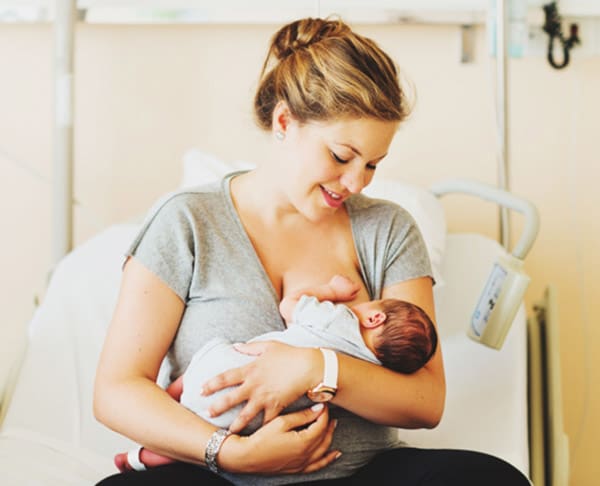CARE AND FEEDING BASICS
Breastfeeding Positions for Newborns
test
summary
There’s more than one way to breast- or chest-feed a baby. Finding the most comfortable position may take a bit of experimentation. With any position, keep in mind that baby’s:
• Ear, shoulder, and hips should all be in a line.
• Head should not be turned to the side while breastfeeding.
• Neck should be supported at the ear level, avoiding pressure to the back of the head.
Equipment Needed:
• Hungry baby
• Comfortable place to sit or lie down
• Pillows or blankets for support
Steps
Cradle position
Many parents try this familiar position first, thinking this is “how it’s done” — but it’s just one option. It may not be the best position for babies who have difficulty achieving a deep latch. To try it:
- Sit on a comfortable bed, chair, or sofa with good lower back support.
- Cradle the baby in your arms and across your abdomen.
- Support the baby’s head with an elbow or forearm, and place a supportive hand on the baby’s back.

Cross-cradle position
Great for newborns who need more formal support and direction to achieve a deep latch. It gives you good control over the latch and allows for easy breast compressions. To try it:
- Sit on a comfortable bed, chair, or sofa with good lower back support.
- Support the baby’s neck at ear level with the hand opposite the feeding breast, and use your forearm to support the baby’s spine.
- Use the other hand to hold and shape the breast, and to do breast compressions as needed.
- Once a deep latch is achieved with good suction, you can transition to a cradle position without breaking the latch.

Laid-back position
This comfortable move lets gravity help with deep latching, may alleviate discomfort from overactive let-down or fast milk flow, and can let you get a little rest during feeding. To try it:
- Start by latching in a cradle or cross-cradle position.
- Once the baby is maintaining attachment, lean back to rest your back on pillows or a reclined chair back.
Football or Clutch Position
This position makes it easy to look into the baby’s eyes during feeding.
- Turn the baby’s torso to face your side, tucking the baby’s backside under your arm and positioning their head near your breast.
- Support the baby’s neck at ear level with the hand adjacent to the feeding breast, and use that forearm to support the baby’s spine.
- Use the other hand to hold and shape the breast, and to do breast compressions as needed.
Side-lying position
Try this on a sofa with a firm back or on a firm mattress with pillows to support your back.
- Lie down on a couch or bed on your side with knees bent. Place a pillow under your head to keep your neck comfortable. If you use a blanket, keep it well clear of the baby.
- Lie baby on its side, facing you. A rolled up blanket can be used to support the baby’s back — be sure to provide a barrier behind the baby to prevent rolling off the edge of the bed or couch.
- The breast closest to the surface is the feeding breast. Raise your upper body by resting an elbow on the couch or mattress while shaping the breast with your hand. Support the baby’s neck at ear-level with your other hand.
- Once latch is achieved, you can hold the baby close with your upper arm while slowly lowering yourself to a completely flat side-lying position.
- Lastly, you can move your lower arm to create a C-shape with your lower arm, abdomen, and upper legs.
Follow Up:
See a lactation professional for assistance with breast or chestfeeding latch and positioning.
This and other how-to guides are available as free downloads

